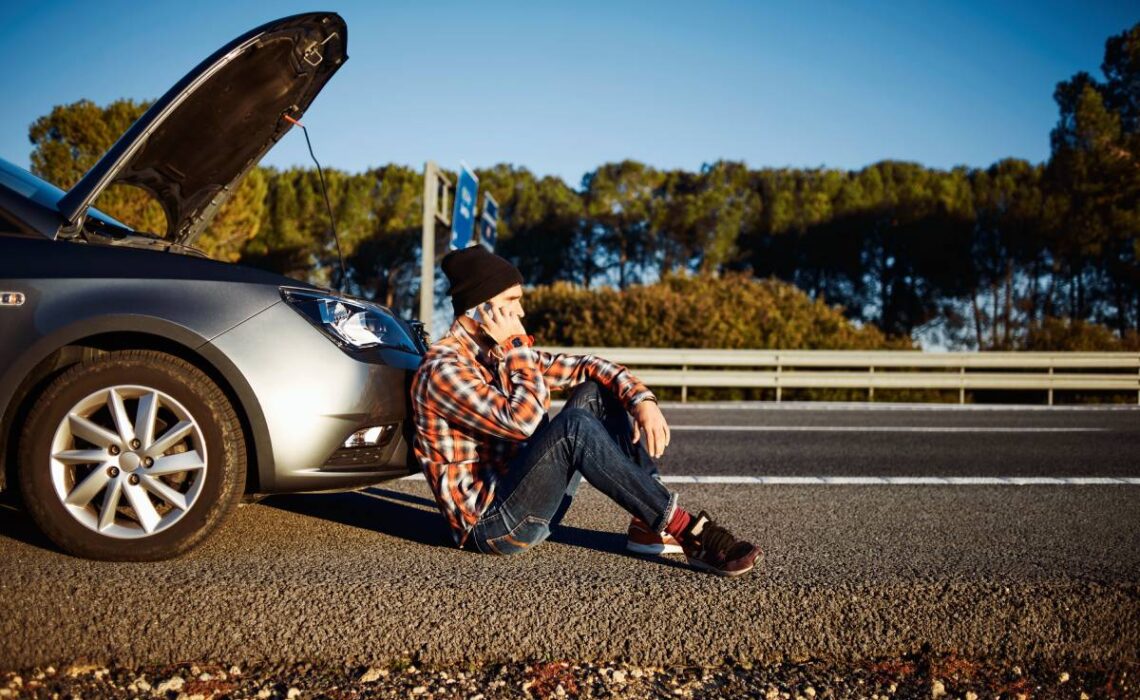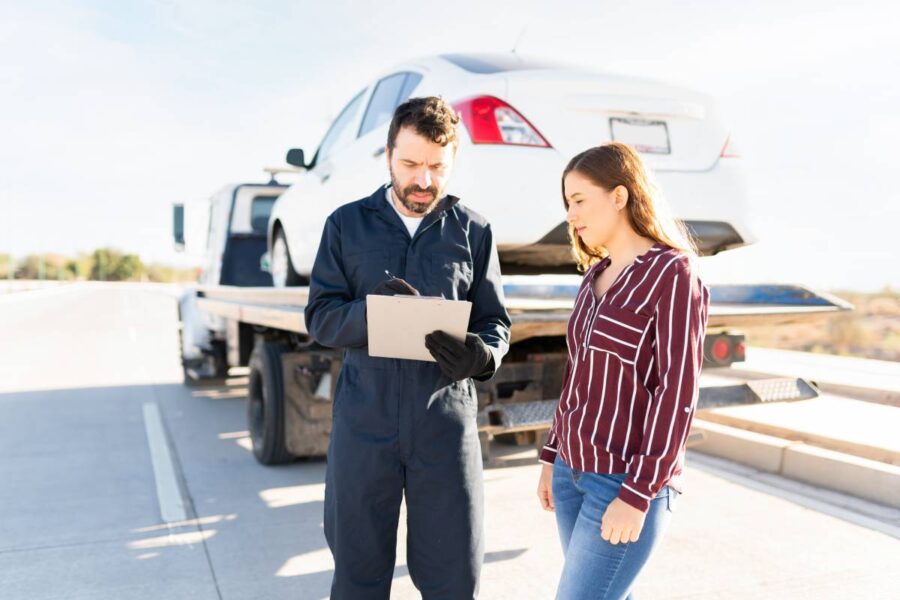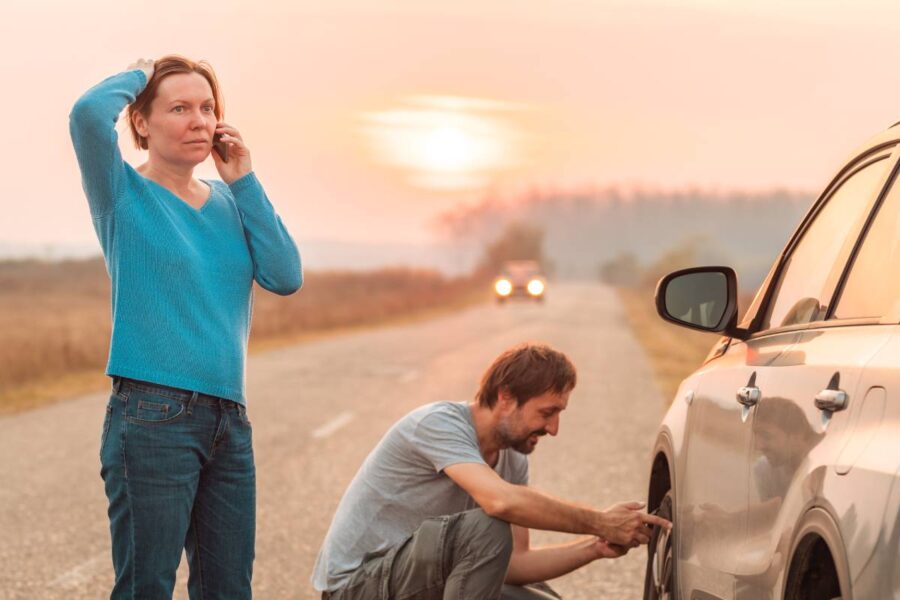
There’s nothing quite as stressful as your car breaking down in the middle of an Australian highway, especially when you’re far from home or in the middle of nowhere. Whether you’re cruising along the Great Ocean Road, driving through Sydney traffic, or crossing the Outback, breakdowns can happen when you least expect them. Knowing what to do when your car stops unexpectedly can keep you safe, save you money, and help you get back on the road faster.
In this guide, we’ll walk you through exactly what steps to take when your car breaks down in Australia, from staying safe and calling for help to understanding whether your car insurance or roadside assistance covers the costs.
Stay Calm and Prioritise Safety
If your car breaks down, your first reaction might be panic, especially if it happens on a busy highway or in a remote area. The most important thing is to stay calm and focus on safety, both yours and your passengers’.
- Pull over safely: If possible, steer your vehicle to the left side of the road or an emergency stopping lane. Avoid sudden braking or turning.
- Turn on hazard lights: This alerts other drivers that you have stopped due to an emergency.
- Use your handbrake and hazard triangle: Engage the parking brake and, if you have a warning triangle, place it at least 50–100 metres behind your car (further if you’re on a highway).
- Stay inside your vehicle (if unsafe outside): If you’re on a busy road or motorway, it’s often safer to remain inside the car with your seatbelt fastened.
- Move to a safe area: If traffic is light or you’ve stopped in a rural area, step out on the side away from passing traffic and wait at a safe distance.
Assess the Problem (If It’s Safe)
Once you’re in a safe position, try to identify what went wrong. Some common causes of breakdowns in Australia include:
- Flat or blown tyre
- Dead battery
- Engine overheating
- Running out of fuel
- Alternator or belt failure
- Electrical issues
If you’re confident and it’s safe to do so, you can perform a few basic checks:
- Check fuel levels and battery indicators.
- Look for steam or smoke (do not open a hot radiator).
- Listen for unusual noises when starting the engine.
However, if the problem seems complex or you’re unsure, don’t risk further damage; call for roadside assistance.

Call for Roadside Assistance or Towing Services
In Australia, several roadside assistance services operate 24/7 across all states and territories. If you’re a member of an organisation such as NRMA, RACV, RACQ, RAA, or RACWA, call their emergency line for help. They can dispatch a mechanic to repair minor issues or tow your car to a service centre.
If you’re not a member, you can still contact:
- Your car insurer (some policies include roadside assistance).
- A towing company in your area.
- Local mechanics or emergency breakdown services.
For instance, if you’re in Victoria and need reliable help, Interstate Towing AU in Melbourne provides professional towing and vehicle transport services across the city and interstate routes. They’re equipped to handle small cars, 4WDs, and even heavy vehicles, ideal for both city drivers and travellers stranded far from home.
When calling for help, provide:
- Your exact location (use your smartphone GPS or highway markers).
- The nature of the problem (flat tyre, smoke, etc.).
- Vehicle details such as make, model, and registration.
If you’re stranded in a remote area, roadside services might take longer, so always carry essentials like water, snacks, and a fully charged phone.
Know Your Location and Communicate Clearly
In remote parts of Australia, particularly in regions like the Outback, Nullarbor Plain, or Northern Territory, it’s common to be far from towns or mobile coverage. If your car breaks down in such areas:
- Use a satellite phone or emergency beacon if available.
- Stay with your vehicle — it’s easier for rescuers to locate.
- Signal for help using reflective materials, hazard lights, or even a car mirror during the day.
If you’re driving long distances regularly, consider investing in a UHF radio, an emergency kit, and extra water storage. Australian weather can be harsh, and preparation can save your life.

Does Car Insurance Cover Breakdowns in Australia?
This is one of the most common questions drivers ask after a breakdown. The answer depends on your car insurance policy type.
Comprehensive Car Insurance
Comprehensive insurance is the highest level of coverage, protecting you from accidents, theft, fire, and damage caused by weather or vandalism.
However, it doesn’t automatically include roadside assistance. Some insurers offer it as an optional add-on, meaning you’ll need to purchase it separately.
Comprehensive insurance may help with:
- Towing costs after an accident (not for mechanical breakdowns).
- Repairs if the breakdown was caused by a covered event (e.g., collision or flood).
- Hire a car while your vehicle is repaired.
This can be a lifesaver if you rely on your car daily or if you’re considering renting a car temporarily while yours is in the shop. Many comprehensive policies reimburse a portion of your hire costs, especially if the repair is due to an insured incident.
Always read your Product Disclosure Statement (PDS) to confirm whether breakdown-related expenses are covered.
Third Party, Fire, and Theft Insurance
This type of insurance generally covers damage you cause to other people’s vehicles and loss or damage to your car from fire or theft.
It does not cover breakdowns or mechanical failures.
Third Party Property Only
This is the most basic level of car insurance in Australia. It covers damage you cause to other vehicles or property, and nothing else.
It doesn’t include breakdown assistance or towing costs.
Roadside Assistance Add-Ons
Many insurers now offer optional roadside assistance packages, which can cover:
- Flat tyres and jump starts
- Emergency fuel delivery
- Lockout help
- Towing (up to a certain distance)
- Battery replacement or transport to the nearest repairer
For example:
- NRMA Roadside Assistance offers Basic, Premium, and Premium Plus tiers.
- RACV Total Care provides nationwide coverage with unlimited callouts.
- Budget Direct and AAMI also offer affordable roadside options tied to insurance policies.
If you drive long distances or in rural areas, having roadside assistance included is a smart move for peace of mind.

Costs Involved in a Breakdown
If you’re not covered by roadside assistance or insurance, the costs can add up quickly.
Here’s what you might expect to pay in Australia:
- Towing: $100–$300 within metro areas, more for rural towing (can exceed $1,000 for long distances).
- Battery replacement: $150–$400.
- Tyre change or replacement: $100–$250 per tyre.
- Mechanical repairs: Varies widely depending on the fault.
Adding roadside assistance to your insurance policy can save hundreds of dollars if you experience even one breakdown.
What to Do After Your Car Is Towed or Repaired
Once your car has been towed or fixed:
- Get a detailed repair invoice — useful for insurance claims.
- Contact your insurer if damage occurred due to an accident or weather event.
- Review your policy to see if roadside coverage can be added for future peace of mind.
If you were stranded far from home, some insurers or roadside services may help with accommodation, car hire, or travel expenses, especially under premium plans.
Preventing Future Breakdowns
Prevention is always better (and cheaper) than a roadside emergency.
Here are a few maintenance tips to keep your vehicle reliable:
- Regular servicing: Follow your manufacturer’s schedule.
- Check tyres and pressure before long drives.
- Inspect oil, coolant, and battery levels frequently.
- Replace worn belts, filters, and spark plugs as needed.
- Listen for unusual noises — they’re often early warning signs.
If you own a recreational vehicle or plan to tow a caravan yourself, make sure to inspect hitch connections, brakes, and lights before travel. Regular checks can prevent accidents and ensure safe towing across long distances.
Final Thoughts
Breaking down on an Australian road can be stressful, but with the right preparation and knowledge, you can handle it safely and efficiently.
Remember:
- Stay calm and ensure safety first.
- Move your car to a secure location and turn on hazards.
- Call roadside assistance or your insurer for help.
- Check your insurance coverage to see if breakdowns are included.
If not, consider adding roadside assistance to your policy. It’s a small cost for major peace of mind.

